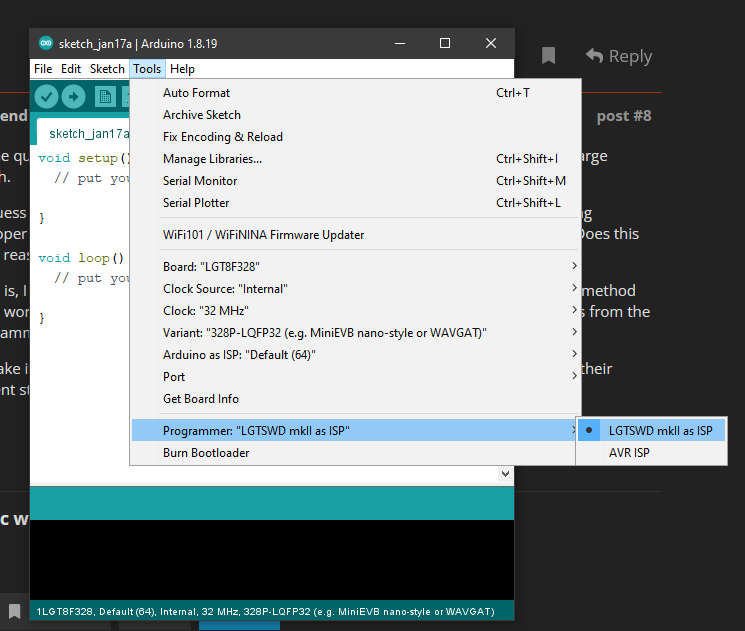I ordered up a few of these ultra-cheap alleged Pro Mini clones to play with. I believe that BTE17-14 is the part / model number but I can't be completely sure as they have other markings as well (see pic).
First thing I notice is the lack of precision frequency reference - no crystal or resonator. More on this in a bit.
The seller offered a board defs package which I installed - but quickly learned that sketches would not compile when one of the new boards was selected as target. So much for that.
Being as they're sold as Pro Mini compatible, I then tried building with "Pro or Pro Mini" as the target. Now small sketches would build & upload BUT.. the board ran at 25% of normal speed.. apparently 4mhz. Even the serial UART ran at 25% speed, 2400 baud. Weird.
But trying to upload a 30K sketch was another matter. The avrdude Writing progbar would freeze at ca. 95% with "Programmer not responding" error.. after which the board was bricked.. I bricked two of them like this, just for good measure. ![]()
So what do we know about these things? Can they be put to good use?


